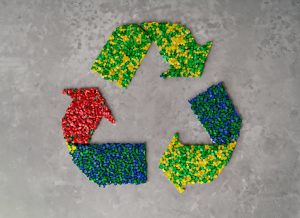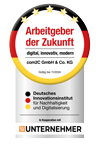The HP Latex 873 Optimizer and HP Latex Inks are designed for optimal printhead performance and consistent results at high speeds.
In the normal operation of the latex printer, the Optimized print head completely independent.
The optimizer application takes place before the actual ink. In this way, the optimizer prevents ink from running and ensures that the ink dots are well fixed. The already good properties of the latex ink are optimized for high printing speeds, and the scratch resistance of the prints is increased.
How exactly does this work?
HP Latex Optimizer consists of positively charged (cationic) polymers suspended in a water-based colorless ink vehicle. The optimizer reacts with the negatively charged (anionic) ink pigments to quickly fixed on the printing surface. This produces sharp text and image details by suppressing color bleed and bleeding, especially at high productivity.
Furthermore, the HP Latex Optimizer enables the drying and curing process HP Latex Inks are stable and more energy efficient even at lower temperatures, which has the added benefit of ensuring broad media support and lower power consumption.
When is it worth making your own optimizer settings for the HP Latex?
If problems such as coalescence (the merging of ink drops) or granularity in solid fills occur in the printed image, it can be worth keeping an eye on the optimizer settings as well. The speed does not always have to be reduced and thus your production slowed down.
The default setting for optimizer is in the factory state of the machine 12. This is also usually the correct setting for banner materials. At textiles becomes a value of approx. 24 recommended. For the print on Canvas drive frequently with an attitude between 30 and 47 preferably. This has to be tested individually.
Very good printing results with optimal machine efficiency can be achieved with a value of 30 for the optimizer and 130% ink application. The HP Latex then prints optimal, brilliant colors at efficient printing speeds.
The customized settings cannot be saved in a generic pressure profile. However, you can clone the profile and make your adjustments in the newly named copy.
This is particularly worthwhile for print media with a rather rough surface, such as canvas materials.
Sources: Own tests on HP Latex 700 and https://www.youtube.com/watch?v=vvDZOhkC7u4







